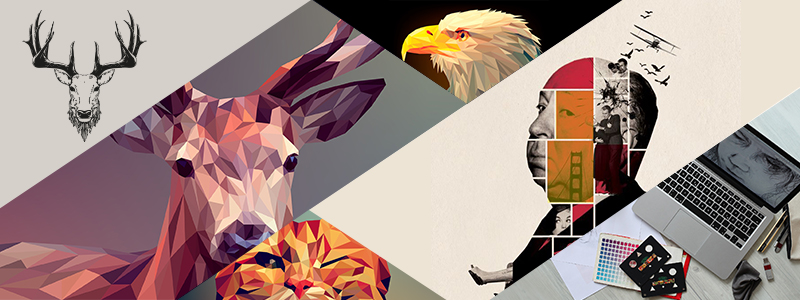Basic Instincts
The other day, my niece, a grand total of a year’s life experience under her belt, picked up my sister-in- law’s iPhone and started navigating it with a level of dexterity that elicited the following comment from my brother, “Man these kids, I swear, are being born with better processors!” I almost agreed. Kids today, let me tell you, seem to come aboard with crucial upgrades already done! I mean, no way was I this smart at a year old! Were you? However, and probably thankfully, some things simply don’t change. A child today will react to bright colors the same way my generation did as children; shapes, colors and patterns will always hold a significantly bigger sway on us humans than anything else. I think this will always hold true due to the fact that when it comes to cognitive abilities, we fall back on instinct first. The civilized human is a trained human; instinct is purely animal in nature. Acquired knowledge through systematic training of the mind hence, takes that fraction of a second more to kick in.
Hence, when it comes to languages, it is said that, while significantly harder to acquire, one doesn’t really forget languages like Chinese or Japanese, which use a pictographic script instead of more popular phonetic ones, and while one might, with sustained neglect, forget the phonetics of these languages, comprehension never really goes away. You can still read the letters for what they represent, because there is mental image of the symbol that one associates with a particular object. The point being, that we can understand why physical symbols and motifs are so important for organizations who exist, because they exist on the web. Even digitally literate audiences, who can obviously read and write and who can easily identify with the names of brands and organizations, show a greater affinity to logos, symbols and themes associated with a brand name or organization. Hence when we say WWF, we visualize a giant panda first and when one says Olympics, we immediately visualize the five rings. This is the reason why entrepreneurs look to hire only the best graphic designers to give their business or campaign a symbolic identity.
Lost in a trillion images
The world is a crowd of images, colors, motifs and symbols, all of which carry out a veritable assault on our most primary sense – sight. The eyes are like continuously whirring cameras, clicking a million images every day. For an organic mind with average capabilities, retaining all those images is practically impossible. Hence the brain does a natural culling process within images that have been acquired incidentally, images which have been captured while the mind was either focused on something else or wasn’t focused at all. The most common example for this is the state of our mind when we are flipping through a magazine at an airport or awaiting our turn at the doctor’s reception. For a brand to make an impact hence, the window of opportunity is extremely limited. If a logo, theme or design of an ad is not impactful enough, the brain will automatically cull that image and delete it. However, the ones that do make an impression are retained within the inner contours of our brain, the part that we call the subconscious. Hence the next time one sees the same or similar image, cognition kicks in. That, in a nutshell, is the science driving the art of design and the reason why something like graphic design is deemed so critical to your business.
The cost of standing out and apart
Businesses, especially smaller, younger ones, are often too scared to stick out. There is an undeniable herd mentality within humans; that it would affect human-driven enterprises is but natural. However, a good graphic designer would almost always look to provide the right amount of shock and awe to his/her design to stand apart from the crowd. Compared to average, run-of-the-mill designers, who won’t have either the skill or the courage to work beyond set templates and motifs, talented and experienced designers know the value of creating a unique and lasting image on the consumer. Therein lies both the crux of the solution and (hence) the problem. For outstanding designs, you need outstanding talent; and we all know from experience, true talent is never the norm in any field.
The finite nature of talent also means that for the average business, it is mostly out of bounds. Large corporations also ensure a sort of monopoly on local talent, thanks to their very deep pockets. It isn’t surprising then that small and medium sized businesses seek out graphic design services in India, Eastern European countries and Latin America, since premium design talent in these countries is still available within their budget range.
Leveling the field
A small business in the US can confidently look to hire the best graphic designers in countries like India. The affordability of Indian talent is well known and graphic design services in India, even the best and most expensive ones, can easily slash your bills in half or more. This levels the field somewhat, when it comes to smaller companies competing with the larger organizations. While you would come across opinions which question the quality of work offshore, remember that large economies like India have no dearth of talent. The competition that these designers and design agencies have to endure is quite extreme in nature, and only the very best are able to stake a claim to the top. So the kind of talent that is available for anyone who is looking to outsource is quite substantial. Since working on offshore projects are considered more lucrative and prestigious by most designers in India, it further ensures the interest of the very best in the industry.







